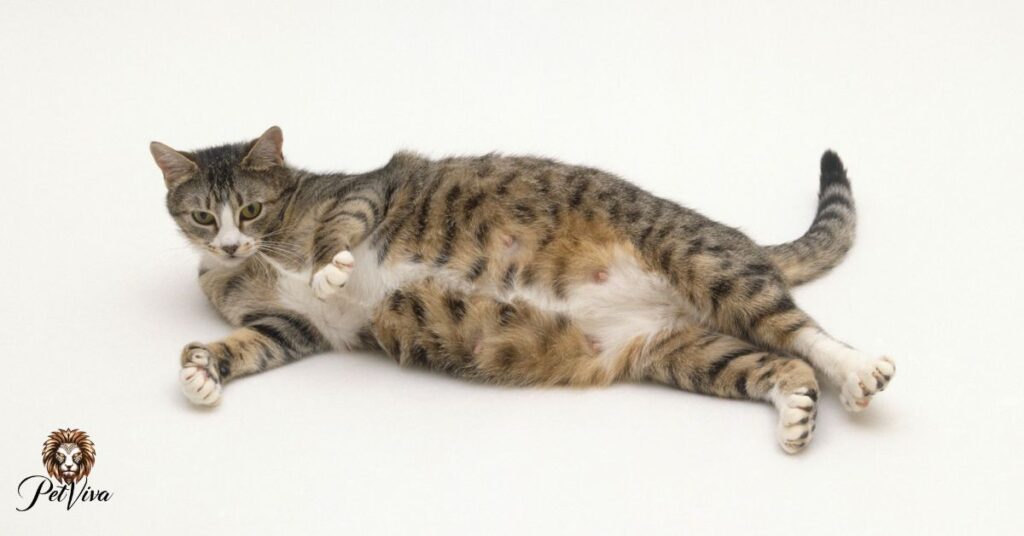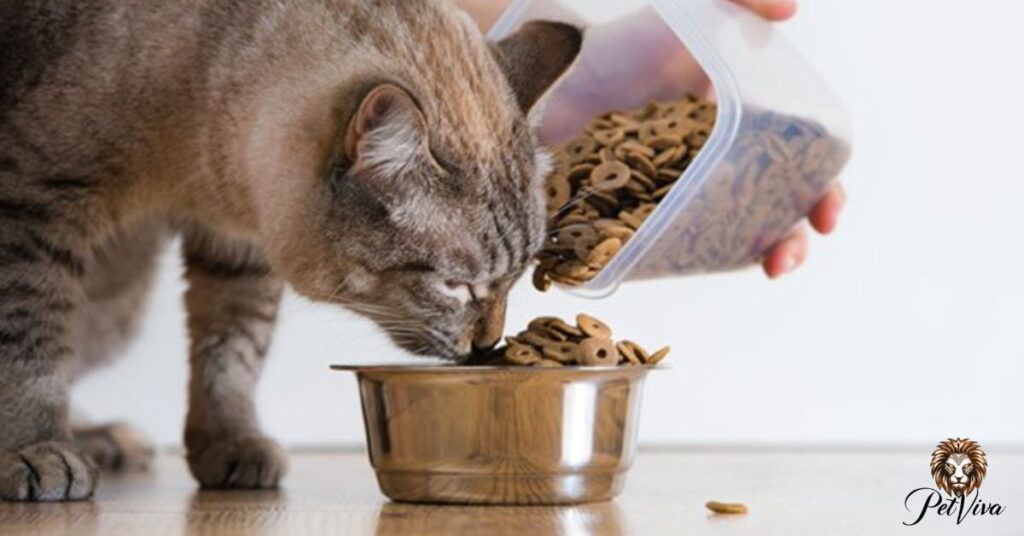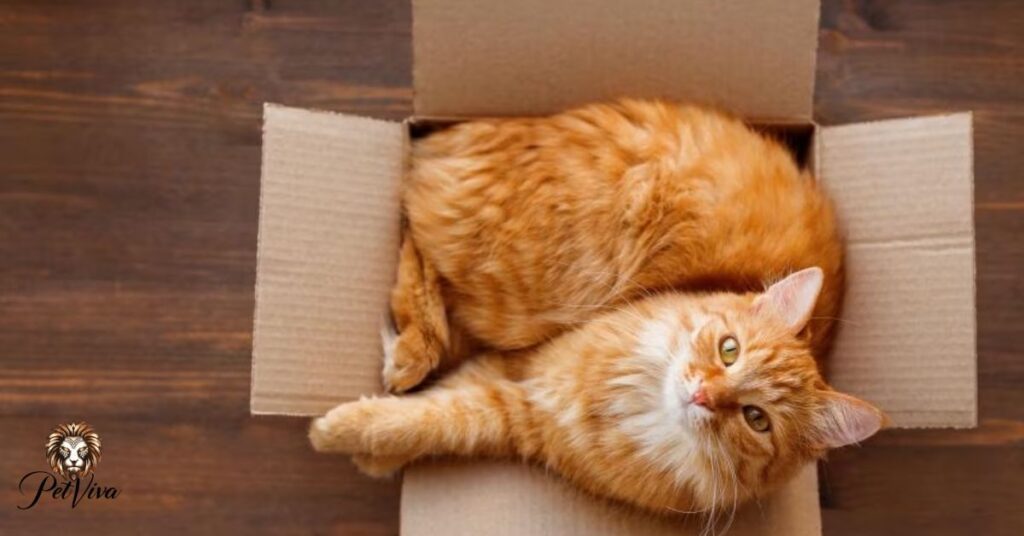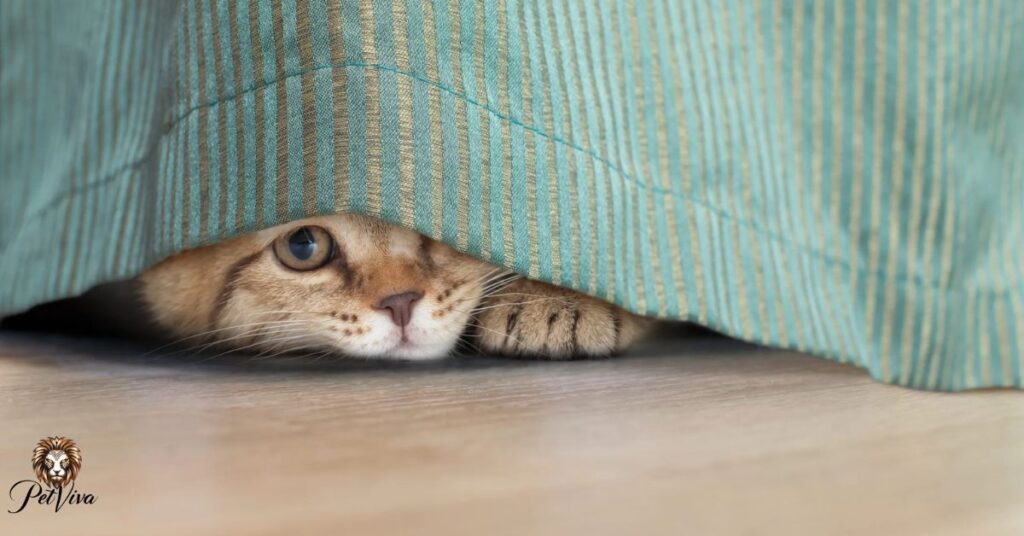A cat hides without eating, it means they are avoiding food while in hiding. This could be due to fear, stress, or illness. Cats can survive without food for several days, but prolonged fasting can be harmful. If a continues to hide without eating for an extended period it’s crucial to seek veterinary care to address any underlying issues.
Hide without eating is crucial for every pet owner. Cats have unique behavior’s that can puzzle us. Understanding these facts can help ensure the well-being of our feline friends. Essential information together.
The cat hasn’t eaten for 24-48 hours, seeking veterinary attention. Hiding and not eating could indicate stress, illness, or injury. a healthy cat shouldn’t go too long without food. Keep an eye on their behaviour and consult a vet .
How long can a cat hide without eating?
Cats are masters of hiding, but how long can they go without eating? Its a concern for many pet owners. Cats can typically survive without food for about 1 to 2 weeks, closely during this time. Factors like age, health, and access to water can affect how long a cat can go without eating. If your cat is hiding and not eating for more than 24-48 hours, it’s crucial to seek veterinary attention promptly.
It could be due to stress, illness or a change in their environment. Cats may hide when they are sick or injured as a natural instinct to protect themselves. Stressors like moving to a new home, changes in routine or the introduction of a new pet can cause a cat to retreat and refuse food. Monitoring your cat’s behavior, providing a quiet and comfortable space.
Also read this: CAN CATS FIND THEIR WAY HOME? FACTS EVERY OWNER SHOULD KNOW
Why do cats hide?

Cats hide for various reasons, One common reason is fear or anxiety. Cats are naturally cautious creatures, and when they feel scared or threatened they seek out hiding spots to feel safe. Loud noises, unfamiliar people or pets or changes in their environment can trigger this fear response. It’s essential for owners to create a calm and secure environment for their cats to help hide behavior.
Illness or pain can also cause cats to hide. In the wild, showing weakness can make them vulnerable to predators, so sick or injured cats instinctively retreat to protect themselves. Owners should monitor their cat’s behaviour closely especially if hiding is accompanied by other symptoms like lethargy or changes in appetite. Providing a comfortable and quiet space, along with regular veterinary check-ups can help ensure that any health issues are addressed promptly, and your cat feels safe and in their environment.
They are sick or injured
When cats are sick or injured, they may exhibit changes in behavior, such as hiding. This behavior stems from their instinct to protect themselves from potential threats. Cats naturally retreat to quiet and secluded areas when they feel unwell to avoid further stress and danger. As responsible pet owners, it’s crucial to pay attention to these signs of distress and seek veterinary care promptly.
Recognizing the signs of illness or injury in cats is essential for their well-being. Symptoms like lethargy, decreased appetite, vomiting, diarrhea, or changes in grooming habits could indicate underlying health issues. Owners should provide a comfortable and safe environment for their sick or injured cat, along with access to water and appropriate medical attention. By addressing their needs promptly, owners can help their feline companions recover and thrive.
They are pregnant

When a cat is pregnant, it’s essential for owners to recognize the signs and provide appropriate care. One common behavior during pregnancy is nesting where the cat seeks out a quiet and comfortable space to give birth and raise her kittens. Pregnant cats may also display changes in appetite, becoming more or less hungry as the pregnancy progresses. It’s crucial for owners to ensure their pregnant cat has access to nutritious food and a stress-free environment to support a healthy pregnancy.
Monitoring the pregnant cat’s health is vital for both her and her kittens. Regular veterinary check-ups can help confirm the pregnancy and ensure everything is progressing smoothly. Owners should also provide a clean and warm nesting area for the cat to give birth, along with necessary supplies like food, water, and a litter box. By providing attentive care and support, owners can help their pregnant cat through this important stage of her life.
They are scared
Cats can become frightened by various stimuli, including loud noises, unfamiliar people or animals, or sudden changes in their environment. When scared, cats may exhibit behaviours like hiding, hissing, or trembling as they try to cope with their fear. Creating a safe environment, free from potential stressors, can help a cat’s fear and promote feelings of safety and well-being.
Attempting to force a scared cat out of their hiding spot or comforting them in a loud or forceful manner can exacerbate their fear. Instead, owners should provide a calm and reassuring presence, offering gentle encouragement and allowing the cat to approach them on their terms. By respecting the cat’s boundaries and providing support when needed, owners can help their frightened feline feel more secure and confident in their surroundings.
Why do cats refuse to eat?
One common reason is stress or anxiety, which can result from changes in the cat’s environment, routine, or social dynamics. Other potential causes include illness, dental problems, or food aversions. Observing changes in behaviour, appetite, or energy levels can help owners identify when their cat is refusing to eat and take appropriate action to address the underlying cause.

offering a variety of food options, and ensuring regular veterinary check-ups can help determine the cause of the cat’s reluctance to eat. owners should monitor their cat’s hydration levels and overall well-being while encouraging them to eat through gentle encouragement and enticing food choices. By addressing the underlying cause and providing supportive care, owners can help their cat regain their appetite and maintain good health.
They are in pain
Cats may exhibit signs of pain through changes in behaviour, such as decreased activity, reluctance to move, or vocalisations like meowing or groaning. Other indicators include changes in grooming habits, loss of appetite, or aggressive behaviour. Identifying these signs promptly can help owners seek veterinary attention and alleviate their cat’s discomfort.
Upon noticing signs of discomfort, owners should schedule a veterinary appointment for a thorough examination and diagnosis. Treatment options may include pain medications, lifestyle adjustments or surgical interventions depending on the underlying cause of the pain.
Underlying disease
Cats can suffer from a variety of diseases, ranging from common ailments like urinary tract infections to more serious conditions like diabetes or kidney disease. Recognizing the signs of these diseases, such as changes in appetite, weight loss, or lethargy, allows owners to seek veterinary attention promptly and initiate appropriate treatment.
Upon noticing signs of illness, owners should schedule a veterinary examination to diagnose the underlying condition accurately. Treatment options may include medication, dietary changes, or lifestyle adjustments to manage the disease effectively. By prioritising their cat’s health and seeking timely medical care, owners can help alleviate symptoms, improve quality of life, and ensure their cat’s well-being for years to come.
How long will a cat hide in a new home

How long a cat may hide in a new home is essential for pet owners transitioning to While each cat is unique, it’s common for cats to hide for a few hours to a few days as they acclimate to their new surroundings. Factors such as the cat’s personality, previous experiences, and the level of stress in the new environment can influence the duration of hiding.
create a calm and secure environment by minimising noise and providing familiar items like blankets or toys. Offering treats and gentleness can help build trust allowing your cat to gradually emerge from hiding and feel more comfortable in their new home. By understanding and respecting your cat’s need for adjustment, you can help ease their transition and strengthen your bond as pet and owner.
Signs that your cat is scared
Cats may display a variety of behaviours when they are frightened, including hiding, hissing, growling, or attempting to escape. Physical signs such as flattened ears, dilated pupils or a tense body posture can also indicate fear in cats. these signs allows owners to identify when their cat is feeling scared and take steps to help them feel safe and secure.
Creating a quiet and comforting environment can help alleviate your cat’s anxiety, while avoiding loud noises or sudden movements that may exacerbate their fear. Offering reassurance through gentle words and comforting touches can help soothe a scared cat and build trust over time.
Creating a cat-proof home to prevent hiding
Creating a cat-proof home is essential for owners to ensure their feline companions feel safe and secure. This involves identifying potential hazards in the home, such as toxic plants, small objects that could be swallowed, or open windows without screens. By removing or securing these hazards owners can prevent accidents and minimise the risk of injury to their cats. providing designated areas for scratching, climbing, and hiding can help satisfy your cat’s natural instincts and reduce the likelihood of them seeking out unsafe hiding spots.
Maintaining a clean and clutter-free environment is also important in preventing hiding behaviour in cats. Regularly cleaning litter boxes, providing fresh water, and offering a variety of interactive toys can help keep your cat and engaged , reducing the need for them to retreat to hidden areas out of boredom or stress. By creating a cat-proof home that meets cat’s physical and psychological needs owners can promote a happy and healthy environment for their furry friends to thrive in.
When to seek professional help for a hiding cat

If a cat’s hiding behaviour persists for an extended period, such as several days, or if it is accompanied by other concerning symptoms like loss of appetite, lethargy, or changes in bathroom habits, it’s essential to consult a veterinarian promptly. These signs may indicate an underlying health issue or significant stress that requires professional intervention.
If your cat displays aggressive behaviour when approached, it may be necessary to enlist the help of a professional animal behaviourist. Behaviourists are trained to understand feline behaviour and can provide tailored strategies to help your cat feel more comfortable and secure in their environment. They may recommend techniques such as desensitisation and counterconditioning to gradually reduce your cat’s fear and encourage positive interactions.
Frequently asked question
How long should I wait if my cat is not eating?
If your cat is not eating, wait for about 24-48 hours before seeking veterinary attention.
How long will a cat hide from you?
A cat may hide from you for a few hours to a few days, depending on factors like their personality and the level of stress in their environment.
How long can cats survive without food?
Cats can typically survive without food for about 1 to 2 weeks, but it’s crucial to monitor their health closely during this time.
How long will a sick cat hide for?
A sick cat may hide for several days or longer, depending on the severity of their illness and individual behaviour.
Conclusion
How long a cat can hide without eating is vital for cat owners to ensure their pet’s well-being. While cats are resilient animals, prolonged hiding behavior combined with refusal to eat can indicate underlying health issues or significant stress. Owners should closely monitor their cat’s behavior and seek veterinary attention if their cat continues to hide and abstain from eating for more than 24-48 hours.
Creating a calm and comfortable environment, offering enticing food options, and providing gentle encouragement can help coax a hiding cat out of their shelter and encourage them to eat. By addressing the root cause of their hiding behavior and providing appropriate care, owners can help their cats feel safe secure, and well-nourished in their home.







